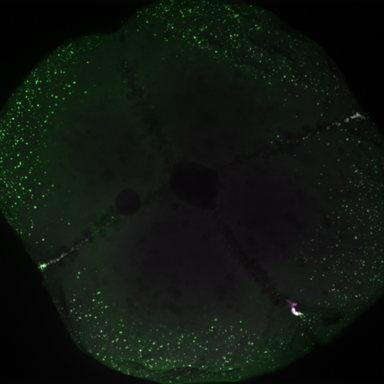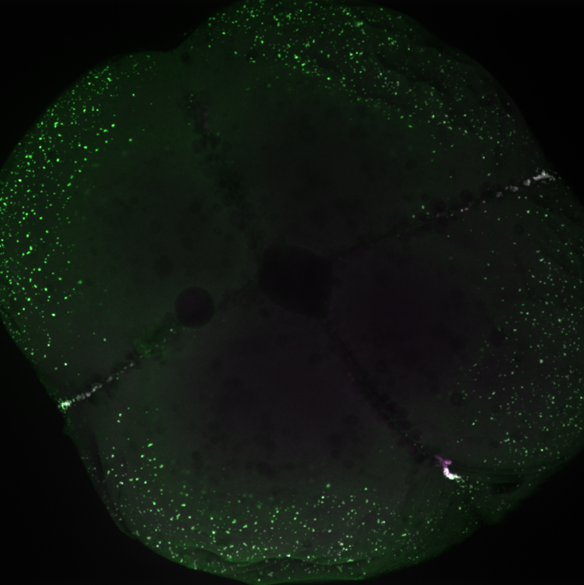Project 15.2

- PhD student: Fiona Carey
- Supervisor: René Ketting
- Co-Supervisors: Miguel Andrade
- Further TAC-members: Dorothee Dorman
- Research Group
My project focuses primarily on a liquid-liquid phase separated structure in Danio rerio called germplasm (Gp). Gp originates as a phase-separated structure known as the Balbiani body (Bb) in the female oocytes. It is a transient structure that undergoes various transitions before being established in the Zebrafish as germ cells. Despite being largely conserved across species, there is still much to learn about how this structure assembles and disperses across time. This project will explore the role that Buc2-like plays in this dynamic.
Eukaryotic cells contain both membrane-bound and membrane-less structures. Dynamics involved in the formation of membrane-less structures have not been extensively researched but evidence suggests that liquid–liquid phase separation (LLPS) plays an important factor in their organisation. In Zebrafish there exists a LLPS structure known as germ plasm (Gp) which undergoes various phase transitions across time, first observed in early oocyte formation, and up to the 24-hour old larvae. A novel protein, Buc2l, a homolog of Bucky-ball has been recently discovered to be part of Gp. I aim to explore the role Buc2l plays in such formations and determine how it influences development in wild type and mutant Zebrafish. Buc2l is of particular interest to study, due to the presence of repeat domains, the copy number of which varies across fish species. It has been established that repeated domains play significant roles in phase separation; suggesting that varied repeat lengths in Buc2l may have a key role in the healthy aggregation and dispersal of proteins via LLPS. Initial data indicates the importance of Buc2l for Gp assembly, as its absence leads to a depletion in Gp formation, and further, a mislocalisation and loss of PGCs at the 24hr stage. Additionally to this, preliminary data suggest that Buc2l can be inherited paternally leading to partial rescue of the phenotype. Further data is needed to confirm but if so, this would be the first case of paternal influence on early embryogenesis which has previously been thought to be a purely maternal factor.
